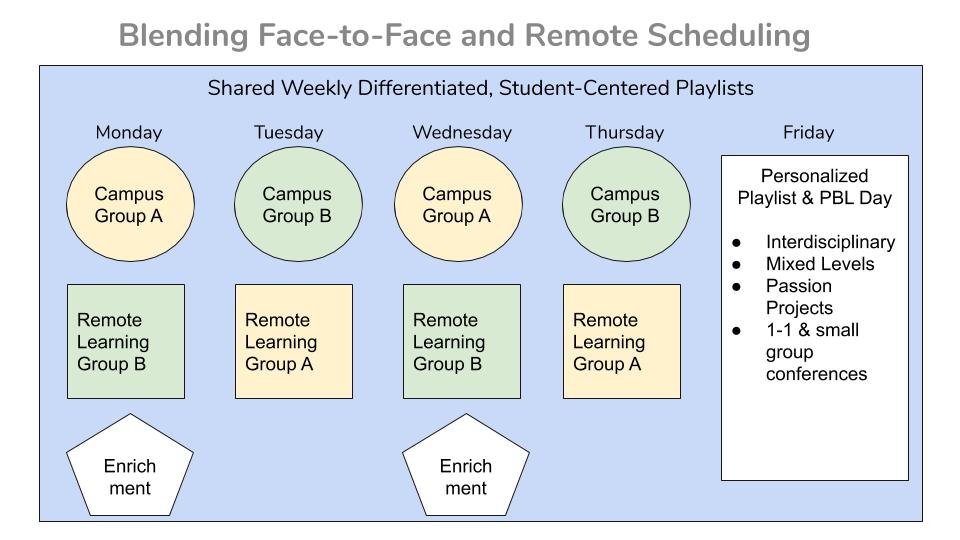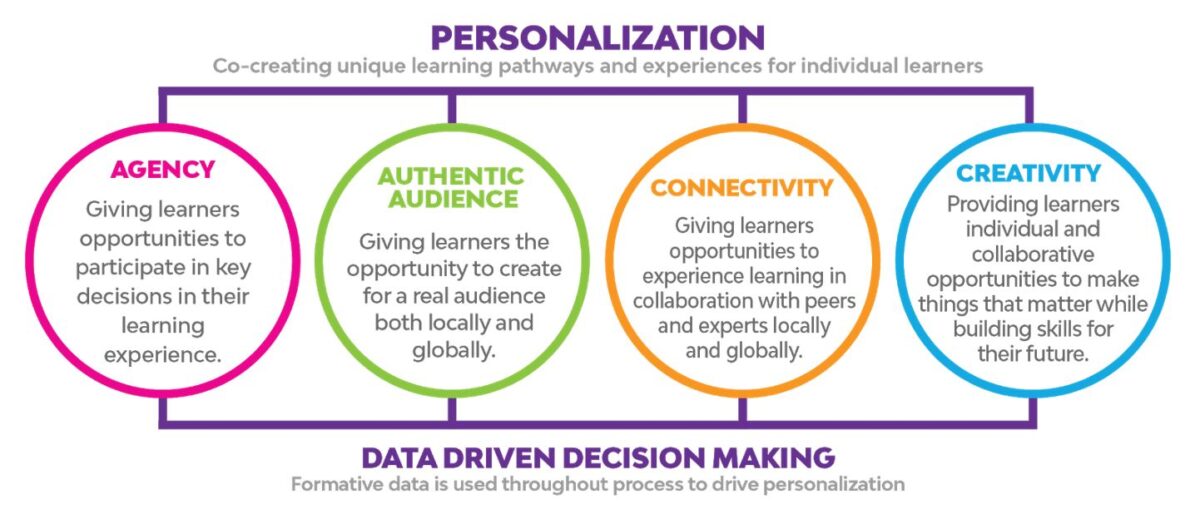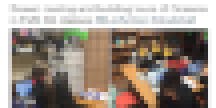In March 2020, a line was drawn in educational history. On one side of it is the before – community, classrooms, reading circles, shared tins of pencils sitting on tightly grouped desks, high fives and hugs, paper, smiles. On the other side is the after, the current state of learning – remote, hybrid, concurrent, asynchronous, Zoom filled days, playlists, masks, sanitizing stations, outdoor tents, alternating days, pods. One thing we all can agree with is that crossing the line from before to after was abrupt and challenging. It has left educators, students, and parents exhausted and most longing for a true back-to-school moment.
And yet, we must not go “back.” The chaos of the transition and the months following created the space for unshackling learning from convention. We had to give up some of our beloved hallmarks — out with testing as the primary means of assessment, out with lockstep pace and sequence charts, out with conventional classroom management. That Friday the 13th of March ushered in a scary period of letting go of the old and being forced out of our comfort zones in traditional classrooms. I can’t help thinking of Hamlet’s soliloquy, “To be or not to be”. When we explored this moment where Hamlet weighs the assaults of life with the fears of death, my students and I would dig into this imagery, “For in that sleep of death what dreams may come, When we have shuffled off this mortal coil, Must give us pause—there’s the respect that makes calamity of so long life.” As educators, we have been so afraid of shuffling off the conventional coil of education, so afraid of what may come from innovation — the loosening of “control” of our classes, the prioritizing of personalization, the deprioritizing of testing — that we have knowingly continued its assaults.
The unshackling forced upon us during the pandemic transition has coincided with an increased awareness of the assaults of conventional education, especially on black and brown students. If the rapid launch into the unknown has brought any clarity, it has been in the area of racial inequity. This is a silver lining of the line drawn through educational history in March 2020.
What if we never go “back” to the way things were…and instead, we commit to going towards what could be? We are just getting a glimpse of a mass return to campus on the horizon, a glimmer, maybe even a mirage, but it is something we can orient ourselves to. Teachers are no strangers to envisioning and designing back-to-school moments. As we set our sights on this moment, let us do so with the following commitments to what could be in a new era of education:
Equity First
My colleague Dee Lanier frequently reminds our team that we must begin with equity. If we fail to start with equity, it becomes the compromise, the thing that may have to be cut to meet the other priorities. If each school leader and teacher place their highest priority on a commitment to racial equity above traditional assessment measures, we can start to transform our classrooms into relevant and engaging spaces for students who we have deprioritized for too long.
Blended Learning = Learning
In the “before” era of education, there was a term called “ed tech” and another called “blended learning”. In the “after” era, these terms should become synonymous with simply “learning”. The transition to remote and hybrid structures provided a rapid study in asynchronous and synchronous learning and the blended learning models through which each can be balanced to achieve more personalized learning. This should be the learning norm.
Student Agency
Students typically have their innate agency squashed by the conventions of classroom management and curriculum pacing very early on in their education careers. In the “after” era, we have witnessed both the detrimental effects of this loss as students struggled to revive their agency during the early transition to remote learning and the critical importance of student agency to success in and beyond the classroom. Another gift of the pandemic era was the vibrant illustration of the demand for critical thinking and rapid problem solving as a future-ready skill. We cannot afford to stifle student agency as our world demands more and more of this skill.
Innovation in Action
In the “before” era, we saw firehose professional development a couple of times a year and initiative overload as competing innovation ideas dried on the vines without water from ongoing, embedded PD. In the after era, we saw teachers innovating every day, by necessity and by a true desire to engage students in a new way of learning. We saw time dedicated to ongoing professional development each week or two, the investment in resources for teacher growth, and a commitment to anytime, anywhere professional learning. As we head back to school, leaders must keep this commitment at the forefront, or else we risk losing the transformational progress made during the pandemic.
The old way of learning died in March. If we can do this, truly shuffle off our conventional coil of education, we may have a real chance to give birth to a sustainable era of educational equity and innovation.








 A large number of students and teachers have moved to remote learning while schools are closed due to the pandemic. How is your implementation of remote learning going?
A large number of students and teachers have moved to remote learning while schools are closed due to the pandemic. How is your implementation of remote learning going?






 Like so many others, I was appalled by
Like so many others, I was appalled by 































